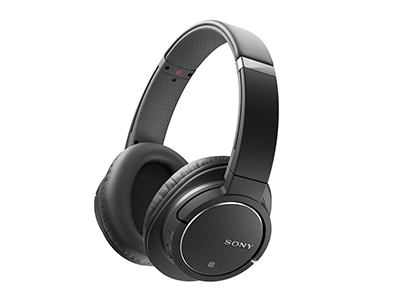Tom's Guide Verdict
The Sony MDR-ZX770BN wireless noise-cancelling headphones deliver precision sound with 13 hours of battery life at a reasonable price.
Pros
- +
Balanced, clean audio
- +
Good active noise cancelling
- +
Long Bluetooth range
- +
Easy to use controls
Cons
- -
Could be louder in most cases
- -
Calls sound muffled and distant
Why you can trust Tom's Guide
It's no secret that Sony knows how to make a good pair of headphones. Such is the case with the $229 MDR-ZX770BN. These wireless noise-cancelling cans prove that you might not be able to have it all, but you can come pretty close. Sporting an unassuming design, the wireless over-ear headphones deliver balanced, precise audio with approximately 13 hours of battery life, making them great for jet-setters. But not everything about these headphones was music to my ears.
Design
The MDR-ZX770BN headphones have a look that is distinctively Sony: functional and utilitarian, with just a dash of bling thrown in. Focusing on comfort, the top of the headband is wrapped in a soft, two-toned plastic, cordoned off by a glossy silver. The remainder of the band follows the black/dark gray two-toned motif, but is made of a hard plastic. Sony also offers the MDRs in blue for those who want a pop of color.
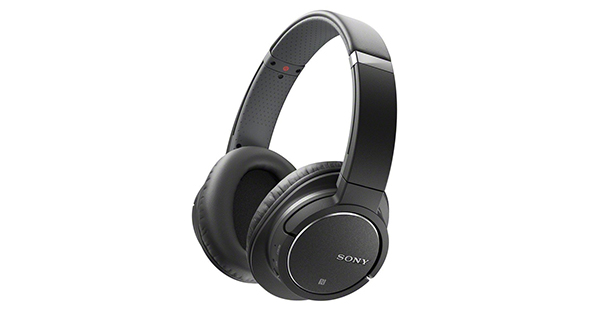
The ear cups are made mostly of sturdy black-matte plastic. However, the central ear caps are made of a sparkly plastic material with a silver Sony logo embedded into each side. The ear cups can pivot 90 degrees, so they can lie flat for easy, compact storage. The inner cups are made from black faux leather that's soft and supple to the touch.
In addition to the headphones, Sony ships a micro-USB cable for charging, a 47-inch audio cord and a black cloth travel bag.
Controls and Sensors
Similar to the Plantronics BackBeat Pro headphones, Sony crammed a ton of functionality into its circumaural (over-ear) headphones. For starters, you'll find a slider button along the bottom of the right ear cup to access your basic music/phone commands (play/pause, answer/ignore, and forward and backward) and a volume rocker.
I prefer Sony's multi-function slider button to having built-in dials on the Plantronics BackBeat Pro.
Buttons for power and artificial intelligent noise cancelling (AINC) sit on the bottom-left ear cup, with a micro-USB port and an input for the audio cable. The company also embedded an NFC chip in the left ear cup for one-touch Bluetooth pairing.
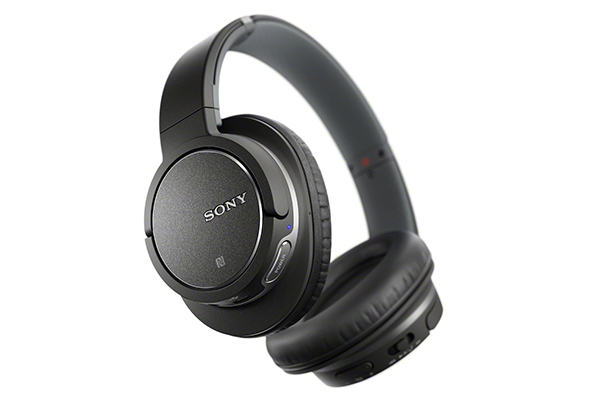
The presentation is a little button-heavy for my taste, but it's easy to master. I prefer Sony's multifunction slider button to having to turn the built-in dials on the BackBeat Pro. I've gotten many quizzical looks on the subway after grabbing and twisting the sides of my headphones.
However, I missed the pair of smart sensors embedded in the left inner ear cup of the BackBeat Pros that automatically pause the music and deactivate the AINC when the cans are not in contact with my skin. I also missed the BackBeat Pro's OpenMic feature, which allows ambient noise to enter the closed soundscape, making eavesdropping on random conversations a fun possibility.
MORE: Best Headphones
Bluetooth/NFC
I connected the headphones to my Motorola Droid Ultra fairly quickly. After holding down the power button for 7 seconds, the headphones entered pair mode. Once my Droid found the headphones, I received a prompt to enter the PIN code listed in the instructions. From there, the pairing process was complete.
Sony also offers its free NFC Easy Connect app (Android, iOS) to expedite the process; however, I still had to enter the password, which defeats the purpose of one-touch pairing.
Comfort
Targeting the jet-setting and straphanger set, the MDR headphones weigh a reasonable 8.6 ounces. That's much lighter than the BackBeat Pro's 11.6 ounce frame, but nowhere near as light as the Bose QuietComfort 25's astonishing 6.9 ounces.
My colleagues and I found that, although the Sony MDR cans were comfortable, they didn't fit as well as the BackBeat Pro did. Despite the lighter frame, there was a slight pleasure around the bottom of my ears. It wasn't uncomfortable per se, but I definitely noticed it. Meanwhile, the BackBeat Pro had better cushioning that distributed the pressure evenly around my ears.
I ended up wearing the MDR for more than 2 hours in relative comfort. The only time I really felt the headphones was if I made a sudden head movement.
Noise Cancellation
When the New York City subway is your primary mode of transportation, you need the ability to insulate yourself from the subway performers and the loud, inappropriate conversations taking place around you. The Sony MDR delivered a modicum of peace, using its AINC to block out the majority of the hustle and bustle of the MTA. Unlike regular ANC, Sony's AINC technology analyzes ambient noise and chooses the best noise-cancelling mode to block it out completely.
The Sony MDRs noise cancelling blocked out the majority of the hustle and bustle of my subway ride.
Using its built-in set of microphones, the headphones pump in white noise, blocking ambient sounds. With just the AINC enabled, the loud group of teens standing next to me on the subway was immediately muffled. I could still make out what they were saying, but at least I could pretend there was some space between us.
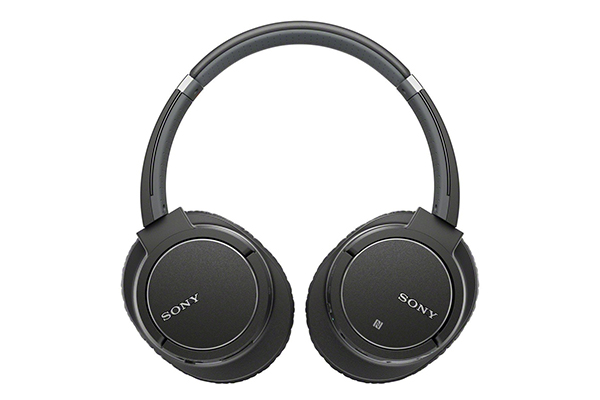
In between the bawdy banter, I also heard a persistent hiss created by the headphones' noise-cancelling technology. The sound faded into the background the longer I wore the cans, but it's definitely noticeable.
The BackBeat Pro's ANC did a better job of isolating me from offending conversations. However, the QuietComfort 25 headphones still reign supreme as a silent oasis, creating an almost perfect vacuum of silence that rendered everyone around me mute.
MORE: Best Bluetooth Speakers
Performance
The Sony MDR-ZX770BN headphones consistently delivered clean, balanced audio, despite the occasional hiss from the AINC. However, all that precision sometimes made the audio feel cold and sterile.
Evanescence's My Immortal sounded somewhat clinical, which prevented me from being totally immersed.
When I started my testing with Evanescence's tearjerker "My Immortal," I immediately got an earful of hiss, which subsided once Amy Lee began singing. From there, the performance was very clean, with a well-defined soundstage. The strings — my favorite part of the track — were strong, yet delicate and complemented the vocal. However, the overall presentation was somewhat clinical, which prevented me from becoming totally immersed. The BackBeat Pro had a more intimate sound, but delivered muddier detail. They were also significantly louder than the MDR.
On the MDR, Jussie Smollett's "Keep Your Money" had crisp percussion and a boomy tuba. However, though I was expecting tight, aggressive bass, the lows on the MDR were rather laid-back. I preferred the BackBeat Pro's more dynamic presentation, even though the detail wasn't as refined.
Bluetooth Range
Bluetooth devices typically have a range of 30 to 33 feet. But Sony went above and beyond the call of duty with the MDR: The headphones continued to play loud and clear music even when my phone was 130 feet down a hallway.
Battery Life
Sony claims that the MDR-ZX770BN's lithium-ion battery can last for up to 13 hours of continuous use with AINC and Bluetooth enabled. You can extend that runtime to 19 hours if AINC is disabled. The Bose QuietComfort 25 claims 35 hours of battery life on a single AAA battery. Neither is a match for the Plantronics BackBeat Pro, which boasts a whopping 60 hours of juice.
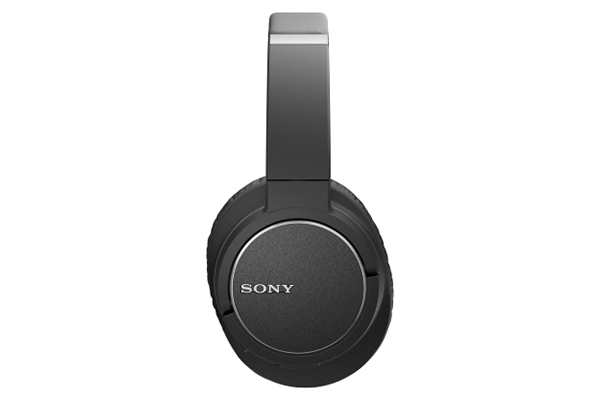
I used the MDR for three days without ever having to charge them. The company claims the headphones can be fully recharged in approximately 2.5 hours. If you can't immediately get to an outlet, the headphones can still be used with the included audio cable, albeit without the AINC.
MORE: Best Soundbars
Call Quality
The Sony MDR-ZX770BZN is great for listening to music. But for placing and receiving calls? Not so much. I made a few calls to family and friends using the headphones as a headset, and everyone reported the same problem: distant-sounding audio. No matter how loud I adjusted the volume, my testers said I sounded muffled or far away from the phone.
Things weren't much better on my end, as most of my calls sounded like they were being conducted underwater. I achieved a little relief when I disabled the AINC, but not enough to recommend using the MDR as your go-to headset.
Bottom Line
The Sony MDR-ZX770BN headphones provide a strong mix of audio quality and functionality. For $229, music lovers get a pair of wireless cans that deliver clean, balanced audio. The AINC technology blocks out most ambient noise and delivers an estimated 13 hours of battery life — long enough for most international flights.
However, for about $30 less, the Plantronics BackBeat Pro offers better active noise cancelling, a more comfortable fit, superior call quality and longer battery life. The audio quality is not as clear as it is on the MDR, but the headphones provide a more intimate performance.
Overall, the MDR-ZX770BN headphones are a fine choice for frequent travelers looking to carve out a few minutes of peace during their commute without cutting too much into their bottom line.
Sherri L. Smith is a Senior Writer at Tom's Guide. When she's not reviewing the latest headphones and speakers, you'll find her gaming on her Xbox One, PlayStation 4 or PC. Follow Sherri at @misssmith11. Follow us @TomsGuide and on Facebook.
Sherri L. Smith has been cranking out product reviews for Laptopmag.com since 2011. In that time, she's reviewed more than her share of laptops, tablets, smartphones and everything in between. The resident gamer and audio junkie, Sherri was previously a managing editor for Black Web 2.0 and contributed to BET.Com and Popgadget.
